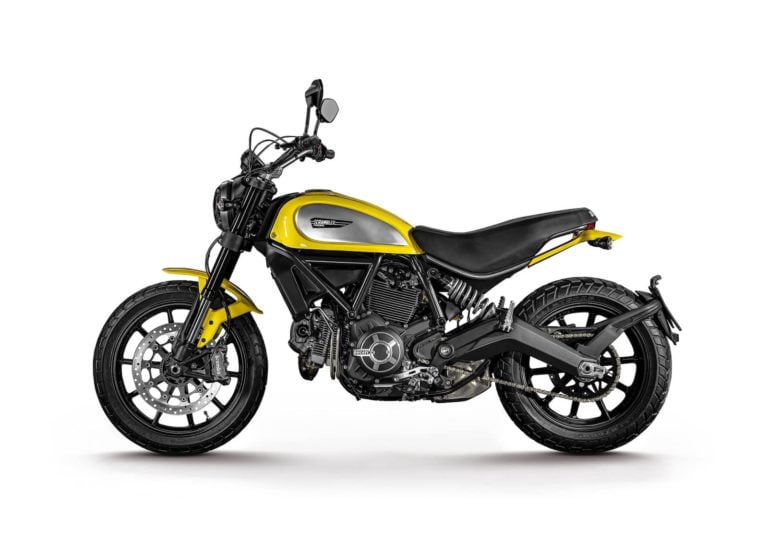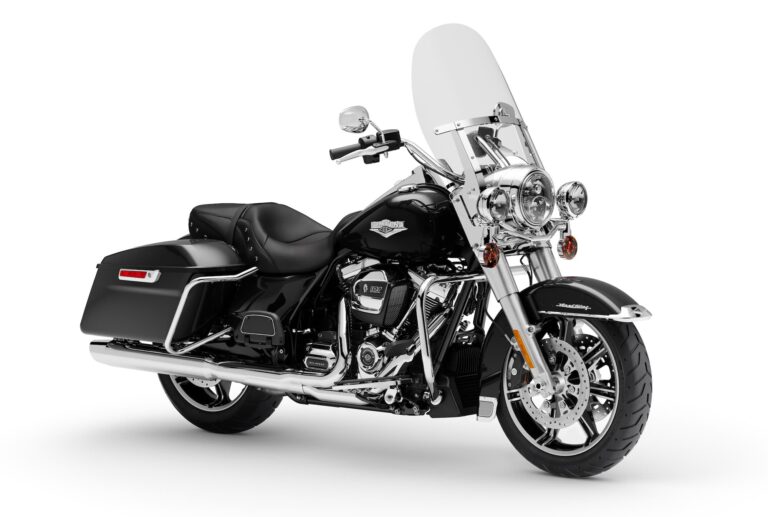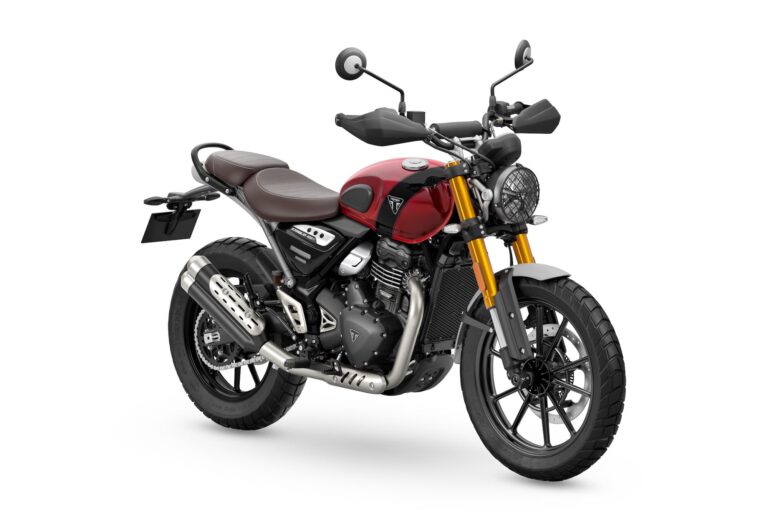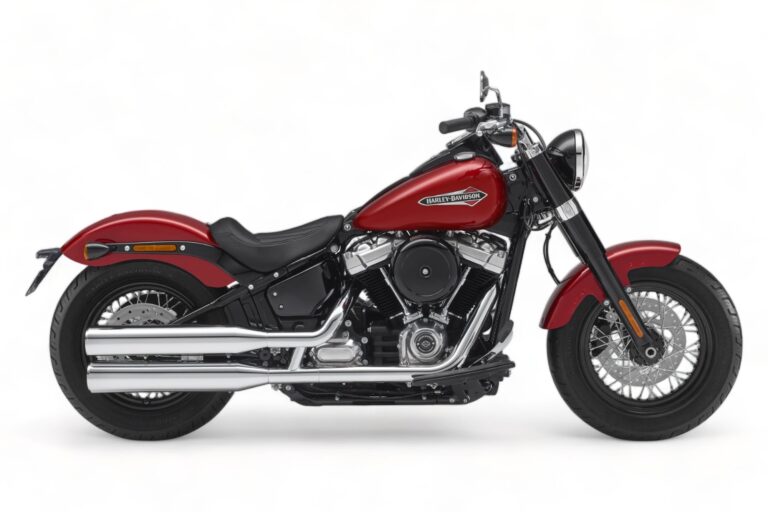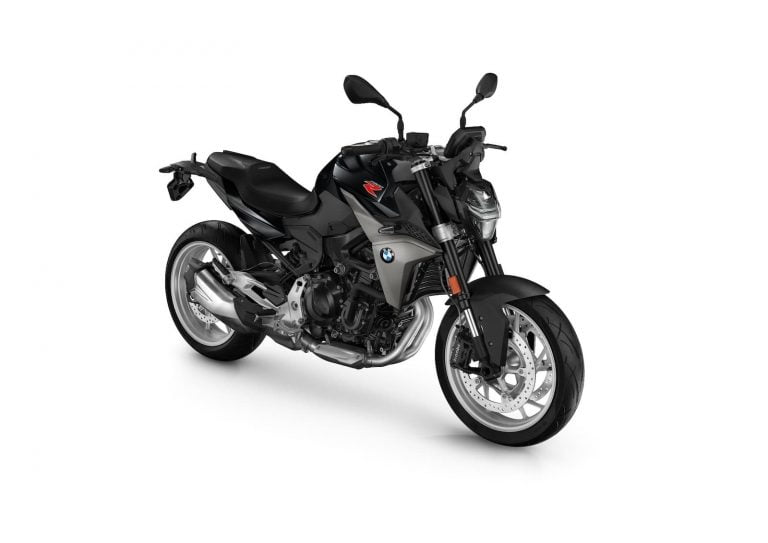Royal Enfield Continental GT 650 Maintenance Schedule and Service Intervals
This is the maintenance schedule for the Royal Enfield Continental GT 650, one of the “650 twins” produced alongside the Interceptor 650.
The Continental GT 650 is a “cafe racer” style retro bike that’s reminiscent of modern classic British-style motorcycles like the Triumph Thruxton 900 or the Kawasaki W800 Café. It is very similar to the Interceptor 650 but has clip-on handlebars and a more aggressive riding aesthetic. The handlebars aren’t too low, and it’s still overall quite a comfortable ride.
The GT 650 is powered by an air/oil-cooled parallel-twin 648cc single overhead camshaft engine with a mild 9.5:1 compression ratio. It makes a very modest 35 kW @ 7150 rpm, and 52 Nm @ 5150 rpm. Power goes to the ground via a 6-speed transmission and a chain drive.
It’s the same engine as in Royal Enfield’s 650 twin-powered cruiser, the Super Meteor 650.
The Continental GT 650 is learner legal in countries/regions like Australia, New Zealand, and Europe, where learners are limited to certain power limits or power:weight ratios. Definitely one of the coolest learner bikes you can buy.
This was originally published on 3 July 2021, but has since been significantly updated.
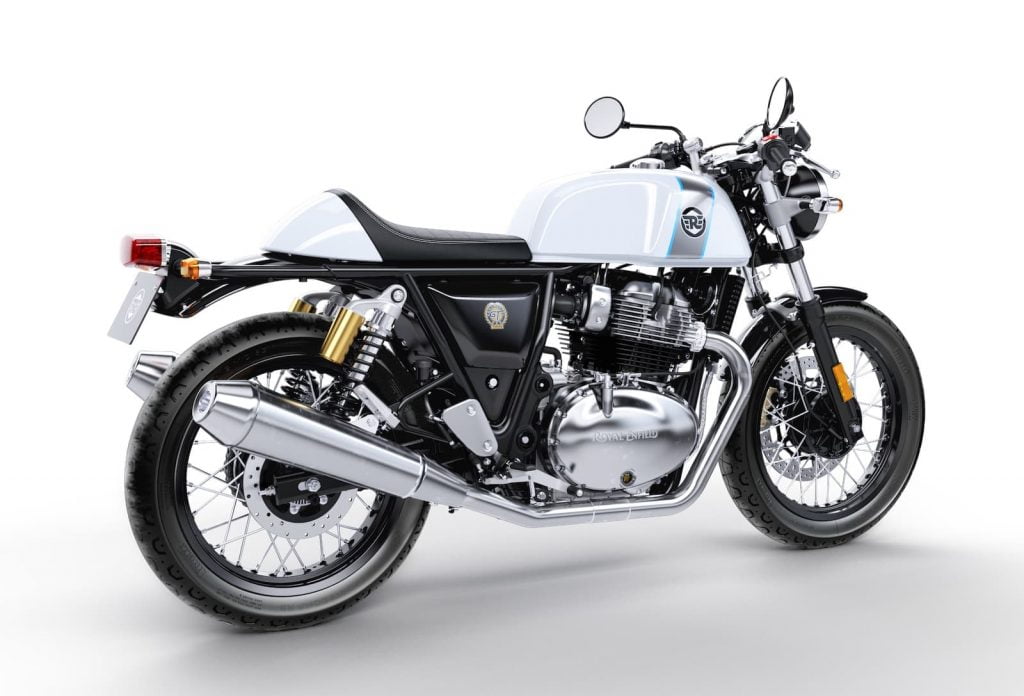
This site has links for things like oil and spark plugs from which we earn a commission (which unfortunately nobody can save, not even us). If you appreciate this work, then please use those links. Thanks!
Royal Enfield Continental GT 650 Service Intervals
The Royal Enfield Continental GT 650, like its Interceptor 650 sibling, has quite short 3000 mile / 5000 km or six-month service intervals at which they recommend you check everything.
The oil change service interval for the Continental GT 650 is less frequent than the standard service, being every 6,000 miles or 10,000 km or annually. When you change the oil and filter, you should also check the valve clearances. (Royal Enfield explicitly says that you have to check the valves and change the oil every year, even if you don’t cover the requisite distance.)

The valve clearance check is not difficult on the 650 twins, but it’s still an annoyance to do so often — for many riders this will come up multiple times a year.
Change the spark plugs every 12,000 miles / 20,000 km.
For more detail, see the service schedule below.
What you need to service the Royal Enfield Continental GT 650
Servicing your Continental GT650 is quite easy. It’s an air-cooled twin with a chain drive. Also, luckily, most of it is exposed and it’s easy to lift the tank to get at the important bits (like to do a valve service).
| Part | Royal Enfield Continental GT 650 Spec |
|---|---|
| Engine oil | Oil changes every 10K km. Manual calls for SAE 10W-50 API SL (or higher) or JASO MA2-rated fully synthetic oil, e.g. Castrol Power 1 10W-50. |
| Oil filter | Royal Enfield wants you to order the filter from their website, but you can use a Mobil 1 M1-104A. |
| Spark plug | Bosch UR5CC (0.7-0.8mm) per the manual. This is equivalent to the NGK CR8E. |
| Air filter | You need to clean the air filter periodically but replace it when you change the oil — or more often if you ride it in the dirt. Use DNA air filter R-RE65N18-01. |
| Brake fluid | The manual calls for DOT 4 brake fluid, e.g. Castrol DOT 4. |
| Fork oil | The manual specs 2W 25 HPCL fork oil. |
| Head lamp | The front headlamp is a H4 60/55W bulb |
| Brake lamp | The rear brake lamp is a P21/5W Halogen. |
| Chain | Use a chain lubricant like Motul chain paste periodically to keep the chain fresh. |
| Grease | Use lithium soap-based grease for general greasing (bearings, swing-arm, kickstand etc.) |
Maintenance schedule for the Royal Enfield Continental GT 650
Below is the maintenance schedule for the Royal Enfield Continental GT 650, taken from the manual and reformatted slightly. (The Interceptor 650 has its own, separate manual.)
There are two separate parts:
- Regular service every 600 miles / 1000 km (or every major ride), and
- The longer-term maintenance schedule
Regular service
Do the following checks on your Royal Enfield Continental GT 650 every 600 mi / 1000 km.
| Component | Regular service |
|---|---|
| Engine oil | Check oil level and top up if necessary (Castrol Power 1 10W-50) |
| Clutch cable | Check cable free play. Adjust if necessary |
| Hand levers | Check hand levers pivot point for smoothness. Lubricate if necessary |
| Drive chain | Clean, lubricate, and adjust chain Target chain tension — 20-30mm |
Maintenance schedule
The recommended schedule is based on ordinary riding conditions. The manual takes pains to state that if you ride it more severely (e.g., in a dusty environment) you’ll have to service your Continental GT 650 more often.
For maintenance after 30,000 miles/ 50,000 km, continue with the same frequency as observed in the schedule (adjusting for how intensely you use your bike).
Noteworthy items in the maintenance schedule are
- You have to adjust the valve clearance every 6,000 miles / 10,000 km
- There’s no coolant to change — this baby’s air-cooled
Legend and notes on the maintenance schedule:
- I : Inspect (Clean, Adjust, Lubricate or Replace if necessary)
- L : Lubricate
- R : Replace
- C: Clean
- The below maintenance schedule is abridged at 12000 miles / 20000 km for ease of legibility. Repeat every item every 1, 2, 3, or 4 intervals.
| Kms x 1000 | 0.5 | 5 | 10 | 15 | 20 | |
|---|---|---|---|---|---|---|
| Miles x 1000 | 0.3 | 3 | 6 | 9 | 12 | |
| Months | 1.5 | 6 | 12 | 18 | 24 | Notes |
| Inspection checklist (see below) — Perform all items | ✓ | ✓ | ✓ | ✓ | ✓ | Perform every year |
| Engine Oil (#) (Castrol Power 1 10W-50) | R | I | R | I | R | Check level at every 1,000 Kms or earlier as required |
| Engine Oil Filter Element (#) (M1-104A) | R | R | R | |||
| Inlet / Exhaust valve clearances | I&A | I&A | I&A | Service valves annually even if distance not travelled. | ||
| Spark plugs (NGK CR8E) | I | I | I | I | R | Replace every 12,000 mi / 20,000 km |
| Fuel filter (External) | R | |||||
| Air filter element | C | C | R | C | R | More frequently if motorcycle often used in dusty conditions |
| Vent pipe under air filter box | I | I | I | I | I | |
| Hose – Secondary Air Injection | I | I | I | I | I | US models only |
| Disc brake fluid, front and rear — Replace | R | Replace every 2 years | ||||
| Front fork oil leak | I | I | I | I | I | Replace fork oil at every 60,000 kms or when any work carried out — whichever earlier |
| Rear wheel cush rubbers | I | |||||
| Earth wire eyelet tightness | I | I |
Inspection checklist
Go through the following checklist at every service per the schedule above.
| Royal Enfield Interceptor 650 — Inspection Checklist |
|---|
| HT leads — Inspect for cracks |
| Rubber Hose, air filter to throttle body — Inspect |
| Rubber hose, inlet manifold / adaptor — Inspect |
| Evaporative emission equipment rubber hoses — Inspect |
| Accelerator and throttle pulley cables free play — Adjust |
| Brake Pads – Front & Rear — Inspect wear |
| Disc brake fluid level – front and rear — Inspect level |
| Rear brake pedal and gear change pedal pivot — Lubricate |
| Brake hose and banjo bolt – front and rear — Inspect condition / tightness |
| Steering tapper roller bearing play — Inspect, lubricate/tighten/replace as necessary |
| Spoke tightness/ wheel rim run out front and rear — Inspect / Adjust |
| Battery terminals — Apply petroleum jelly |
| Battery electrolyte levels — Check Not applicable for sealed batteries |
| Tyre wear pattern front and rear — Inspect |
| Side stand, centre stand pivots — Lubricate |
| Rider and pillion foot rest pivot — Lubricate |
| All mounting fasteners in vehicle for tightness — Inspect |
Tyres and tyre pressures for the Continental GT 650
The Continental GT 650 ships with tubeless tyres but fitted with inner tubes (that’s what it says in the manual, I swear). The same tubes/tyres are used on both the GT 650 and the Interceptor 650. Below are the tire size specs and the recommended pressures.
| Wheel | Tyre size | Tyre pressure |
|---|---|---|
| Front | 100/90-18 M/C 56H | 2.2 Bar Bar (32 psi) |
| Rear | 130/70-18 M/C 63H | 2.5-2.75 Bar (36-29 psi) (depending on riding and load) |
The brand of tyre the bike ships with is Pirelli Phantom Sports Comp tyres, which are very competent. But you can fit any other class of street tyres on there.
About the Royal Enfield Continental GT 650
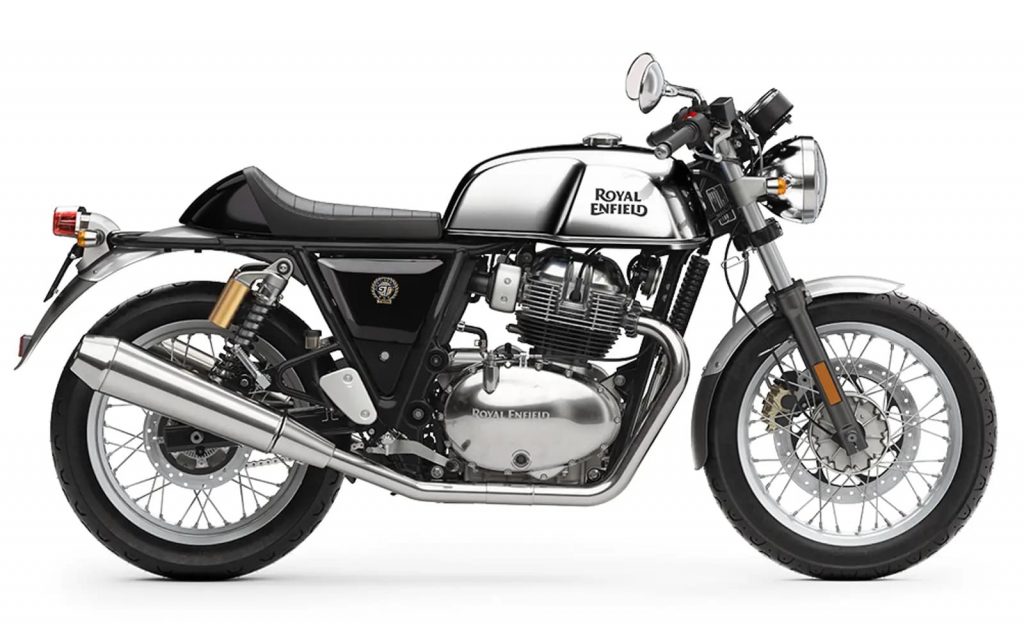
When Royal Enfield announced the Royal Enfield 650 twins, they represented a significant change for Royal Enfield from what it used to do historically.
Royal Enfield was always known for its shaky singles like in the iconic Bullet. So it was quite surprising when Royal Enfield started producing a twin — and in two styles.
The Continental GT 650 borrows some style elements from the Continental GT 535… but that’s about it. Yes, the GT 535 looked good, and was a good basis for a lot of improvement work, but many owners wanted a stronger chassis and more power. The 535 has been discontinued, and replaced entirely by the Continental GT 650.
The Royal Enfield Continental GT 650 is, like its stablemate the Interceptor 650, powered by an air/oil-cooled parallel-twin 648cc single overhead camshaft engine with a mild 9.5:1 compression ratio. It makes a very modest 35 kW @ 7150 rpm, and 52 Nm @ 5150 rpm. Power goes to the ground via a 6-speed transmission and a chain drive.
The Royal Enfield Continental GT 650 is quite a unique bike for Royal Enfield. Royal Enfield was already an emerging cool brand before the 650 twins, known for having a retro/classic vibe (and reality… their bikes are pretty old tech), and some really nice-looking bikes, like the aforementioned GT 535.
Like the 535, the Continental GT has clip-on handlebars for a sporty riding position (though nothing like a high-end sportbike).
But the 650 twins (including the Continental GT 650) delivered a lot of new features that people wanted before making a shift to the Indian brand. These included
- A bigger, more torquey/powerful engine. Still not huge, but now at least it can keep up with traffic on high-speed interstates.
- ABS brakes (a regulatory requirement, but enjoyed by new riders)
- Fuel injection
- More cylinders! Well, one more. And even better, it’s a parallel twin in 270-degree configuration.
Royal Enfield did all this with the Continental GT 650 and still kept the entry price of it very low. It’s definitely one of the best-looking bikes for the money you can buy. In any country in the world where it’s sold — India, the UK, the US, or Australia — a parallel twin bike with great style, ABS brakes, and easy serviceability is a compelling value proposition.
There are those who see a cafe racer and are worried about power output. It does seem to make less sense to be closer to a racer tuck when the top speed won’t go much past 140 km/h…
But the Continental GT 650 does have a lot of room for improvement. Stock, the parallel-twin engine runs a 9.5:1 compression ratio — very low, and suitable for all kinds of bad gas. The camshaft timing is also quite gentle. So you can liven up the engine quite a bit with a camshaft upgrade (which is cheap, as the base engine SOHC), a simple exhaust upgrade, and a dyno tune. So around $1000 of work makes the bike a lot livelier.
Of course, at that point you might also consider upgrading the brakes and suspension.
People concerned about power output in everyday riding needn’t be. The bike peaks in torque just as it’s reaching 75 mph (or 130 km/h), and it still has pull up to around 90 mph (150 km/h). Beyond that, it doesn’t feel too comfortable, and acceleration slows to a crawl.
But most people wouldn’t buy a bike like this to sustain high speeds like that. Yes, some freeway droning almost requires it in Europe and the US, but if you do that often, you might be looking at the wrong bike.
Another impressive thing about the Royal Enfield Continental GT 650 is the handling. Again, it isn’t just “good for the price” — it’s good.
The bike isn’t heavy (202 kg without fuel — similar to competitors like the previous air/oil-cooled Triumph Bonneville 865) and so the stock suspension and brakes are easily up to the task. It doesn’t feel out of shape at high speeds (high for this bike) or on windy roads.
The only fly in the ointment of the Continental GT 650 is the 3000 mile / 5000 km valve service interval. But luckily, service guides are widely available. Get your wrenches out.
Manual for the Royal Enfield Continental GT 650
The maintenance schedule above was from the manual for the Continental GT 650 model.
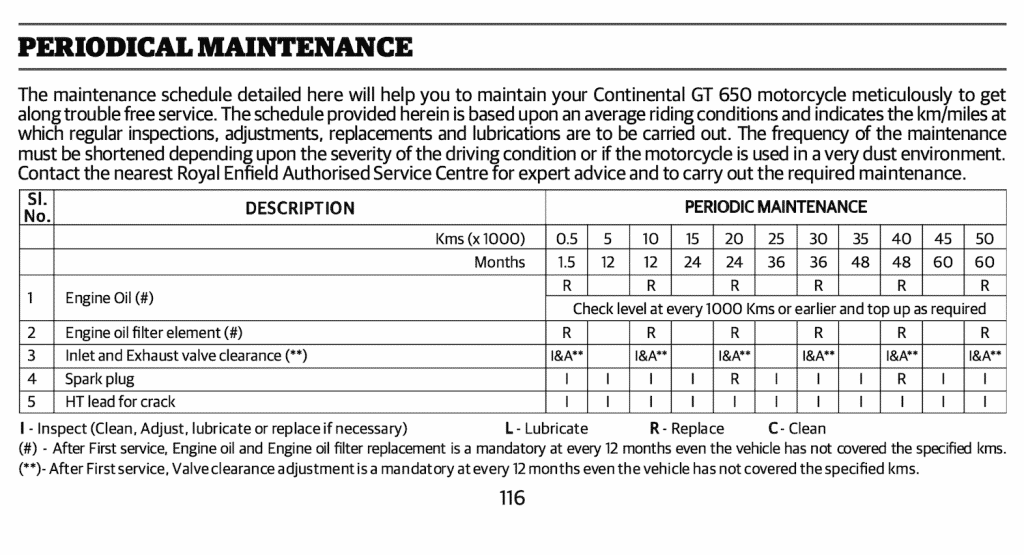
One of my favourite things about Royal Enfield is that they’re very supportive of users doing their own maintenance. There are lots of service resources online. You can find guides to doing the valve service online in many places.
You can get the manual from here. We also compared it to the US manuals, and aside from the air injection system (presumably for CA regulations), the schedule is the same.
